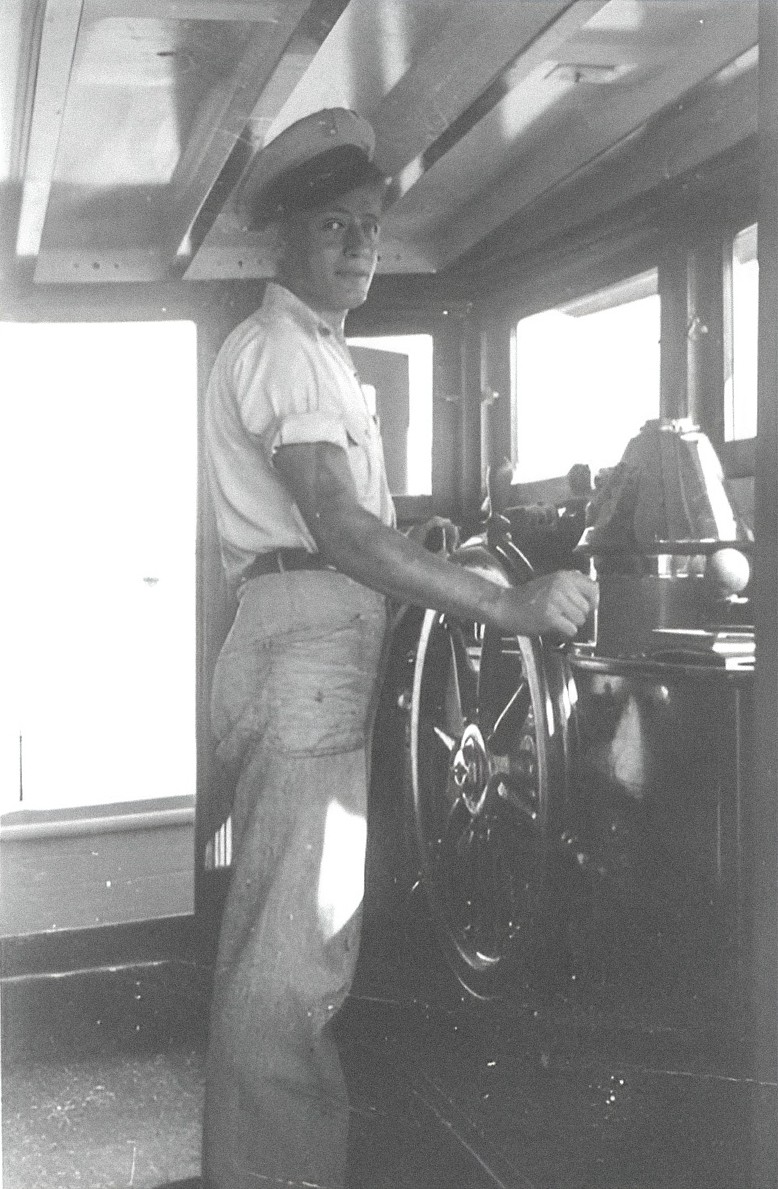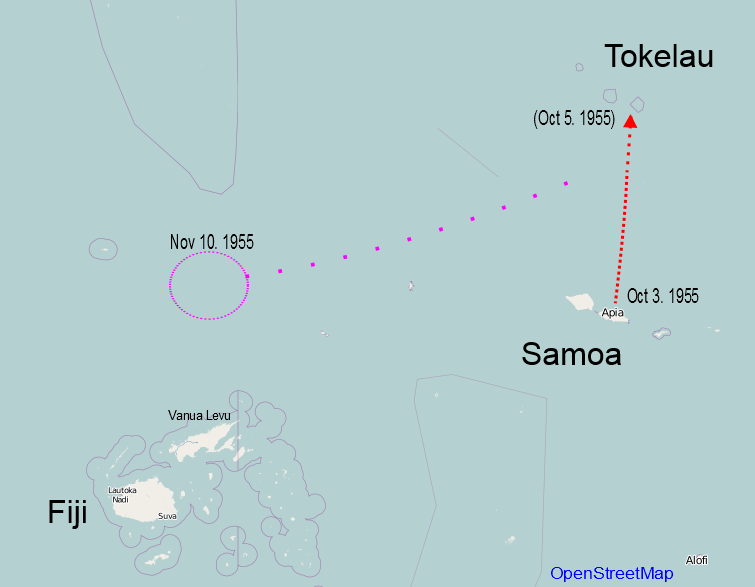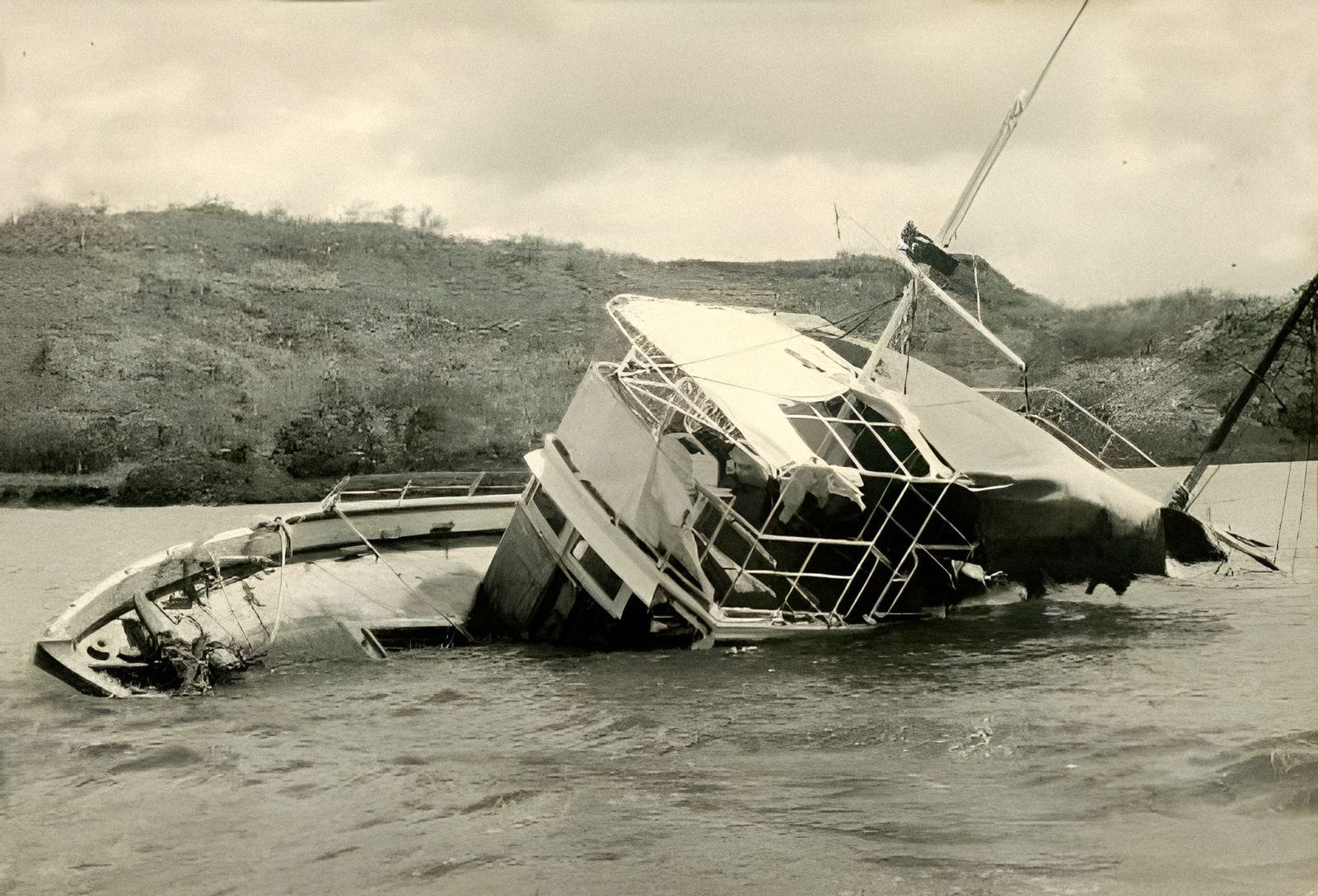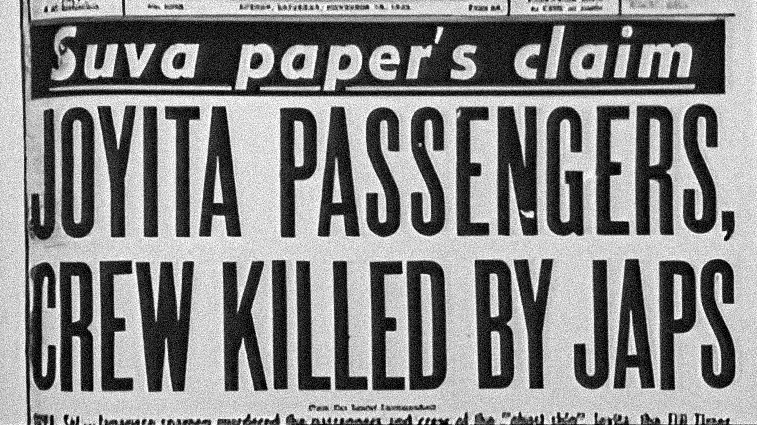At the break of dawn on October 3, 1955, the MV Joyita, carrying 25 passengers (16 of whom were members of the crew) and four tons of cargo, departed Apia, the capital of Samoa. The destination was the Tokelau Islands, a two-day journey of 270 miles across the south Pacific Ocean.

The vessel encountered issues from the onset. Initially, it was expected to set sail the day before, but this was postponed due to the clutch on the port engine malfunctioning. Finally, when it did depart the subsequent day, it was only able to utilize one engine.
The scheduled port of call for the Joyita on October 6 reported that the ship had not been seen. Since no SOS was sent out, an extensive search was set in motion by the authorities, with the Royal New Zealand Air Force playing a significant role. Unfortunately, as of October 12, no evidence of the vessel or its passengers had been discovered.
After a period of five weeks, a trading vessel noticed the Joyita near Fiji on November 10. It was in a dismal state, with its course off by almost 600 miles and majority of its freight gone.

The vessel was evidently unoccupied, and its emergency radio was set to the emergency frequency, suggesting the captain had been attempting to call for help. Additionally, all three lifeboats and the dinghy had been removed.

It was obvious that something had gone terribly wrong when looking at the boat from the outside. Many of the windows were broken and a makeshift shelter had been placed over the deckhouse. On top of being stranded at sea, a large hole in the ship’s superstructure caused the lower deck to be filled with water.
The hull of the ship was discovered to be in perfect condition, indicating that it was still fit to take to sea. The reason for the vessel being lopsided was the flooding caused by the length of time it had been drifting in the ocean. Most of the water damage was a result of the ship bobbing about for weeks.
It is perplexing that despite deploying the life boats and dinghy, none of the four auxiliary crafts were seen. This behaviour seems quite irrational on the part of the ship’s passengers and crew.
Stored within the ship was something truly peculiar. The logbook and navigational equipment had been taken away. The medical bag belonging to one of the passengers (who was a doctor) had all the items taken out and replaced with bloody cloths.
An absurdly misguided effort to plug a leak was made when mattresses were laid over the starboard engine.
The crew had made an attempt to assemble a pump in an effort to counter the flooding in the engine room. Unfortunately, it did not work, however, it does demonstrate that they were determined to keep the vessel from becoming immobile in the middle of the sea.
Even though the motor room was transformed into a swimming pool, the Joyita could still remain afloat. It should have been well-known to the group of sixteen sailors that the cork-lined hull and the remaining shipment of empty fuel barrels would keep the vessel afloat.
What could have caused the 25 people to bravely leave the ship with its provisions and venture out to the Pacific Ocean on lifeboats, regardless of the strange behaviour and the stained cloth? What became of them?

It was uncovered during the salvage process that the emergency radio system on the ship had faulty wiring, meaning that even though it still worked, the range was limited to two miles. This could explain why a distress call was never picked up.
It’s interesting to note that the clocks all stopped at 10:25, which provides an intriguing spur for imaginative paranormal theories. However, it’s more likely that the ship’s generator shut down during that time of the evening.
What became of the passengers and cargo, however, remains a mystery. One theory is that Captain Thomas “Dusty” Miller and his First Mate, Chuck Simpson, had a fight that was so severe it left them both unable to act — hence the bloody bandages.
It would have been a situation in which the vessel would have gone without an experienced sailor and the IQ level of all the occupants would have reduced by 30 points. Under these circumstances, it is not uncommon for such incidents to happen.
Speculation also arose that the Joyita could have been the victim of Japanese fishermen or possibly ex-Nazis still active in the Pacific after WWII. This theory was more of a reflection of the sentiment towards Japan in the region rather than having any concrete proof.

Throughout the years, hypotheses have been put forward concerning mutiny and potential insurance fraud. Nonetheless, none of these theories can explain why no vestiges of the boat’s travelers or personnel were ever located.
When the Joyita was discovered in November of 1955, it is plausible that her cargo may have been looted prior. Even if the crew had been killed by pirates, some evidence of the four auxiliary craft should have at least been found.
The Joyita had been repaired and auctioned off to a different owner in 1956, however, it would run aground twice again within the following three years. Its luck ran out when a mechanical problem, due to improperly installed valves, caused it to be grounded for the third time. This earned the vessel a poor reputation and made it difficult to find someone who wanted to buy it.
In the end, Robert Maugham, a British author, purchased her for her parts and was inspired to write ‘The Joyita Mystery’ in 1962 after doing so.




